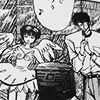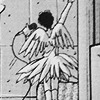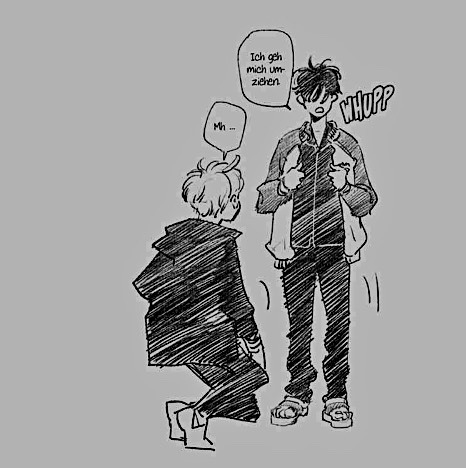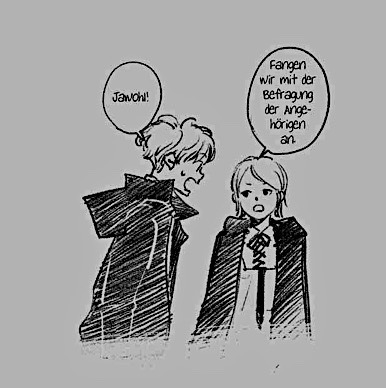#seibu keisatsu
Explore tagged Tumblr posts
Text
TOKYO BABYLON FST: BOX
what's poppin TyoBabi fandom, I got a present for you

.zip File Download: DISCS 1 & 2 (109MB)

This FST is basically an in-depth run down of the collection of songs that were sung/mentioned/in the "VOL. 7/BOX" chapter of Tokyo Babylon 5, with some info about the artists and songs themselves. This, as far as I know, is the most thorough run-through of the music of "BOX" on the English web! I've divided it into two "discs", the first being the songs mentioned themselves, and the second being a few fun related extras. You can check out the second disc over on Radio Free T.Y.O, if you're interested ♥
Ginza no Koi no Monogatari

銀座の恋の物語 - "Ginza Love Story" 石原裕次郎・牧村旬子 - Ishihara Yuujirou and Makimura Junko mp3 download || youtube
The song that Seishirou and Hokuto are pouring their very souls into to perform in the beginning of the chapter. Released in 1961, this a smoky, jazzy duet typical of its time, telling the story of two star-crossed lovers, one in Tokyo and one in Ginza. It was an immediate hit, even having a movie based upon it made, starring Ishihara-san in the lead role. It's a staple duet in karaoke even to this day.
Nakanaide

泣かないで - "Don't Cry" 舘ひろし - Tachi Hiroshi mp3 download || youtube
The song that the random selector spits up for Subaru to sing, which Sei-chan subsequently picks up after sending him off to buy cigarettes/exorcise the OL. This was released in 1984, by Tachi Hiroshi, a singer and actor who became quite the sensation when he had a starring role in 西部警察 (Seibu Keisatsu; "Western Police") -- incidentally, directed by the abovementioned Ishihara-san, as you'd have it. "Nakanaide" was a hit, coming in 59th on the ORICON's 1984 top singles list. It's from his seventh album In the Mood.
Nanpasen

難破船 - "Shipwreck" 中森明菜 - Nakamori Akina m4a download || youtube
The song that the OL ghost sings. A dark and heartfelt song about a dying love, it was a massive hit when it was released in 1987, shooting straight to the top of the ORICON charts (as Nakamori-san's 17th number one hit), and has been a karaoke regular since then, just as the OL says in the chapter. Originally written and performed by the very respected Kato Tokiko for her 最後のダンスパーティ (Saigo no Dance Party; "Last Dance Party") album of 1984; she personally requested that Nakamori-san perform the song. It's been covered countless times, including by the original singer/songwriter and the cover artist themselves.
Daite...

抱いて… - "Hold Me..." 松田聖子 - Matsuda Seiko mp3 download || youtube
Not actually sung, but the OL ghost suggests she'd like to sing it next. A dramatic and emotional slice of idol pop from the Eternal Idol herself, Matsuda Seiko (who also performs "Who's That Boy", found on Single White). Released in 1987 as a promo-only single from her fifteenth studio album, 1988's Citron. Despite never being released as an official single, it's one of Matsuda's more popular songs, especially karaoke-wise. It's rather interesting that the OL picks a Matsuda song directly after a Nakamori Akina track -- the pair were notorious rivals in the 80s, supposedly even in love.
Benkyo no Uta

勉强の歌 - "Study Song" 森高千里 - Moritaka Chisato mp3 download || youtube
The song Hokuto is singing when Subaru attempts to sneak back into the karaoke box. Released in 1991, it peaked at #4 on the ORICON charts, and was remixed on Moritaka's second remix album as ザ・勉強の歌 (Za・Benkyo no Uta; "The・Study Song"). It was used as the opening theme to the anime TV series "Mischievous Twins: The Tales of St. Clare's". It's a totally gimmicky song (complete with voguing in the very weird video clip), though cheerful and catchy, so its popularity on the karaoke circuit at the time shouldn't surprise anyone. (You just know that Hokuto unironically adored this song, and drove Subaru batty by singing it at every opportunity.)
Wakaretemo Suki na Hito

別れても好きな人 - "Beloved Even if We're Separated" ロス・インディオス&シルヴィア - Los Indios & Silvia mp3 download || youtube
The song that Hokuto announces Subaru should sing with Seishirou as punishment for being late. Another staple in the duets section of karaoke, still, this 1979 release was actually a cover. The song was released by two Toshiba EMI artists, Matsudaira Kemeko and the Purple Shadows, respectively, in 1969. In October 1975, Los Indios released a single-voice version, and in 1979 it was rearranged as a male and female duet, with some lyrics changed slightly. The song was an instant hit, and by 1980, it had sold a million copies.
#Tokyo Babylon#TyoBabi#subaru sumeragi#hokuto sumeragi#seishirou sakurazuka#x1999#clamp#seisub#tokyo babylon music#fst#fan soundtrack#fanmix
238 notes
·
View notes
Text


Toto: Do you know her? (Referring to Fin Fennec)
Ron: Yes. That should not surprise her.


Ron: I am going to change my clothes.
Toto: Uhm…
~
Toto: What kind of person is this Dr. Hirsch? (Swallows)


Fin Fennec: We begin asking the relatives.
Toto: Certainly!
~
Shachi: What? You are turning a blind eye when it comes to Kamonohashi, Madame!
Volume 7 intermission flaps, DE version
That Ron and Toto still refer to each other with the formal Sie/Ihnen makes me think, “you are saving each other’s lives and you still Siezen?!”
When are they going to say “du” to each other?
Bonus ….
Toto’s birthday presents from Ron, Amamiya, Spitz, Kawasemi san, Dr. Mofu and Chicory from Chapter 58

Ron: the 100-meter scarf he knitted all by himself when the two of them first learned to know each other from Chapter 1
Amamiya: a pack of white bread with beans that could last for 10 days, only the due date was next day.
Spitz: incense sticks with mugwort essence
Kawasemi: a custom-made tweezer-shaped throw pillow that could fit Toto’s head
Dr. Mofu: a wrecked self-baked cake because of her clumsiness
Chicory: a T-shirt from her favourite TV program “Seibu Keisatsu,” a Japanese police detective drama series in the ‘80s.
Ron would like to know which of the gifts Toto had received that was off the track based on the number of beads of sweat on Toto’s face.
Toto: Don’t ask this kind of strange questions. Of course, all the presents made me happy. (Sweating profusely)
They are so cute.
#kamonohashi ron no kindan suiri#ron kamonohashi#totomaru isshiki#akira amano#ron et toto#rontoto#ron kamonohashi: deranged detective#deranged detective#rkdd spoilers#volume 7#meister detektiv ron kamonohashi#rkdd languages
39 notes
·
View notes
Photo

渡哲也
1980年
214 notes
·
View notes
Photo








I love all the alternate cover parodies for the Double Decker disc releases in Japan! I can only hope Funimation will use them somehow for the NA release.
#double decker#double decker!#double decker! doug & kirill#double decker! ダグ&キリル#sherlock#charlie's angels#hot fuzz#seibu keisatsu#fun fact#Doug's VA is the Japanese VA for Benedict Cumberbatch#also I like how Yuri is the tank lolol
309 notes
·
View notes
Text
RS Machines 1 to 3, based on the Nissan Skyline DR30 Turbo RS.
From the 80′s Japanese TV series Seibu Keisatsu.

日産 スカイライン
西部警察
152 notes
·
View notes
Video
youtube
Western Police AKA Seibu Keisatsu (1979) Soundtrack Funk - Yasushige Utsunomiya - Main Theme
1 note
·
View note
Text
i wnat to watch this series and im not joking

(called seibu keisatsu)
6 notes
·
View notes
Photo



Famed veteran Japanese action movie star, singer Tetsuya Watari dies at 78
Veteran Japanese action movie star and singer Tetsuya Watari, known for his role in the hit police drama "Seibu Keisatsu" (Western Police), died of pneumonia at a hospital in Tokyo earlier this week, his office said Friday. He was 78.
Watari, whose real name was Michihiko Watase, died Monday at 6:30 p.m. He had remained active in show business even after undergoing an operation for rectal cancer in 1991, and heart surgery in June 2015.
Watari gained popularity on television for his roles in police drama series that began in the 1970s, such as "Dai Tokai" (The Big City) and "Seibu Keisatsu." He was also praised for his roles in movies about yakuza gangsters such as "Tokyo Drifter" and "Graveyard of Honor."
Watari also recorded a number of songs, including the smash hit "Kuchinashi no Hana" (gardenia flower), and appeared in NHK period dramas.
The Hyogo Prefecture native was scouted while attending Aoyama Gakuin University in Tokyo, and made his starring debut in 1965 in the film "Abare Kishido" (Wild Chivalry).
1 note
·
View note
Photo
The car was created specifically for the filming of the Japanese TV series Seibu Keisatsu.
Seibu Keisatsu from Japanese means Police: Western District.

9K notes
·
View notes
Photo

Tomytec Tomica Limited Vintage NEO Seibu Keisatsu Gazeru vol21 https://ift.tt/2XTfw5v
0 notes
Audio
Video games inspired by anime and manga have been around for quite a long time. A manga series becoming so popular that an anime series results from it, only to have it made onto a video game seems to be the next logical step. Why not? I mean Alot of anime is filled with over-the-top action and unique characters that the end result does lend well to a video game adaptation. So with that, this STAGE of the retro VGM revival hour is dedicated to video games based on a manga/anime series. =====Game - Composer - Title - Year - Company - System==== 1.)Ghost in the Shell - Takkyu Ishino - "Ghost in the Shell"- July 17, 1997 - Exact & Production I.G /THQ - Sony Playstation 2.) Lupin III: Densetsu no Hihō wo Oe! (Rupan Sansei: Densetsu No Hihou wo Oe!) - Toshio Ogawa - “Boss Battle Theme & Last Battle” - December 27, 1994 (Japan Only) - SAS Sakata/Epoch - Super Famicom 3.) Mamono Hunter Yōko: Dai 7 no Keishō (Devil Hunter Yohko: The 7 Bells) - Keiichi Yamamoto - “Boss Theme” - March 22, 1991 (Japan Only) - KLON / Masaya - Sega MegaDrive 4.) Cowboy Bebop: Tsuioku no Serenade (Cowboy Bebop: Serenade of Reminiscence) - Yoko Kanno - “What Planet Is this!” - August 25, 2005 (Japan Only) - Banpresto/BANDAI - PS2 5.) Astro Boy: Omega Factor - Norio Hanzawa & Tsuyoshi Kaneko – “Antarctica & Stage Select” – December 18, 2003 – Treasure & Hitmaker/SEGA – Gameboy Advanced 6.) Mobile Police Patlabor (Kidou Keisatsu Patlabor: 98-Shiki Kidou Seyo!) - Unknown - “Title Theme & gameplay ”- October 23, 1992 (Japan Only) - Advance Communication/MaBa - Sega MegaDrive 7.) JoJo's Bizarre Adventure (JoJo no Kimyō na Bōken) - Noboru Yamane - “Title Theme, Fierce Battle & The World (Dio's Battle Theme)” - March 5, 1993 (japan Only) - WinkySoft/Cobra Team - Super famicom 8.) Sailor Moon (Bishoujo Senshi Sailor Moon) - Aki Hata - “Staff Roll” - July 8, 1994 (Japan Only) - Arc System Works/MaBa - Sega MegaDrive 9.) Golgo 13: Top Secret Episode - Michiharu Hasuya - “Title Screen” - September 1988 - Vic Tokai & Seibu Lease/ Vic Tokai - NES 10.) Dragon Ball Z III: Ressen Jinzōningen - Shinji Amagishi – “Training & Overworld Theme 1” – August 7, 1992 (Japan Only) – TOSE/Bandai – Famicom 11.) Kamen no Ninja: Akakage - Tomohisa Mitsuyasu & J-Walk - “Area Theme 2, Area Theme 7 & Final Boss” - May 20, 1988 (Japan Only) - Shouei System/ Toei Animation - Famicom 12.) Fist of the North Star (Hokuto no Ken: Shinpan no Sōsōsei Kengō Retsuden) - Arc System Works Sound Team - “Village of Miracles & Ai Wo Torimodose! (full version)”- March 29, 2007 (Japan Only) - Arc System Works/SEGA - Arcade/PS2 13.) Sword of the Berserk: Guts' Rage (Beruseruku Sennnen Teikoku No Taka Hen Wasurebana no Shō) - Susumu Hirasawa - “Parasite” - December 16, 1999 - Yuke's Media Creations/Eidos Interactive - Sega Dreamcast Edgar Velasco: @MoonSpiderHugs FB: www.facebook.com/groups/vgmrevivalhour/ Official Site: nostalgiaroadtrip.com/ AND NOW AVAILABLE ON GOOGLE PLAY: play.google.com/music/m/I2uvnfvy4…_VGM_REVIVAL_HOUR
#anime#manga#Japanese game#japan#jojo's bizarre adventure#fist of the north star#sailor moon#cowboy bebop#vgm#vgmusic#VG Music#vgm cover#vgm ost
2 notes
·
View notes
Text
Showreel
Research: Examples of Successful Showreels
1.‘Showreel 2018’ by Moth
[https://vimeo.com/253290476]
Duration: 01:12
Music: Hornet - Seibu Keisatsu
The presentation is simple and clean, with all clips the same size and all transitions being immediate. A majority of the clips are held for the same amount of time but, there are a few longer ones at the begging so the viewer can settle, and some quicker ones in the centre to match the music change. The sound begins with a piece of music that builds anticipation until it suddenly switches to an upbeat tune. The beginning is filled with little flourishes of sound affects, that have had clips matched to them for a cohesive flow and create an element of emphasis. One part even includes the sound effect form the original animation, and the soundtrack reduces its volume which is helpful. There is also a part when all the images moves downwards and outwards, following the shrill, spiralling sound of violins just before the change in beat, thus holding the audience’s attention more. The creator of the showreel is not revealed until the end. The outro card consists of a specially made animation of moths flicking between art styles, until it rests on the studio’s logo.
Overall I feel this is a highly successful showreel as it takes the viewer on a subtle journey with the soundtrack, but it still leaves enough time to linger and appreciate the quality of the animation. It all seems to work in unison. I would have liked there to be a quick introduction to the studio at the start so that I would know what I was watching straight away, but in a way the reveal at the end matches the tone of the music. The duration is suitable, but I did notices towards the end the clips sped up to match the music again and it was too fast to understand what they were showing, which defeats the purpose of a showreel. Nonetheless, I was left interested to discover more of their work.
2.‘Lobster Showreel 2018’ by Lobster Studio
[https://vimeo.com/265152575]\
Duration: 01:16
Music: Original Sound Design by Fabrizio Martini
This presentation makes use of morphing to transition between clips at the start, and whilst they always fit to the sizer of the screen, the zoom in, out, and pan across it. The transitions become simple cuts later on, but it changes between similar animations and completely different styles, keeping the viewer on their toes yet aware of all the different things the studio can accomplish. The original music made for the showreel had beats that perfectly matches the changes in video, and the changing tempo allows for simpler shots to be held for a short time, and more complex ones for longer. The satisfying exactness of the timing and the fast paced beats excite the audience. The showreel has both an intro and outro card in the form of animations rather than static imagery. The first takes part in the morphing animation, where the title and date are displayed on a unique number of fingers. The second is more traditional and shows their logo forming out of a lobster that moves across in the final clip.
In conclusion, this is one of my favourite soundtrack for a showreel because of the clear, snappy beats, But that is to be expected if the music was specially made for the video. Nonetheless, the timing was successful as I was never bored and never missed anything, and because the music worked in thats favour, it didn’t detract from the quality of work being shown. I particularly likes the very begging when there was no music, just the sound effects of the animation that created anticipation for the real work to begin. There always are some, but personally I find no improvements to make. This is a great example of a successful showreel.
3.‘Twistedpoly Showreel 2017’ by Twistedploy aka. Nejc Polovsak
[https://vimeo.com/239423699]
Duration: 01:19
Music: Jumo - Désert
The presentation often follows the pattern of showing a clip in full scale, and then jumping between different close ups and angles in sync with the music’s beat. This allows the viewer insight to the entirety of the design. Similarly, some clips will be slow and then speed up with the soundtrack and slow down again within the same image, so that it can be shown longer yet still fit within the music and avoid disjoining the videos. The music itself is uplifting which is always motivational and sparks intrigue, but has a depth to it that matches the 3D animation. The intro card is specially made to immediately display their skill in animation as well as introducing their personal brand. Just like the others, the duration of the showreel is around one minute and ten/ twenty seconds, so I think I should follow this trend too if I have enough work to show. A complimentary clip is featured at the end, and the movement reveals their email. This extra information is key and remind the viewer of whats they’ve just seen.
To conclude, I think the use of timing is intuitive and highly successful as a showreel. I loved the specially made intro and outro card that elevates their distinctive brand/ style, and the curious tone to the sound. There is a suitable range of work which has more successful pieces at the beginning and end, hiding less impactful animations in the centre. I also enjoy the contrast of the slower scene in the centre with the ethereal looking creature, between the fast clips of shoe advertisements. I would have liked to see some progress footage but I don’t know if that is necessary for an animator of this calibre.
0 notes
Photo

渡哲也
1980年
167 notes
·
View notes
Photo

"Super Z" from the over-the-top Japanese cop show Seibu Keisatsu. Aside from the Fairlady being re-imagined as a gullwing, the show specs included 20 mm cannons. [ https://i.redd.it/oivqk40fw6s21.jpg ]
0 notes
Photo

NECO NO “FRIENDS”
Welcome to youkoso, it’s “Necomasa Comics, New!! From ‘Kawaiikochans’”. Once again it’s the craze, “Kemono Friends Comics.” Necomasa-chan is under suspicion?! We hope it’s okay...
As for “GUEST!! Serval-chan”, it’s an MMD by schwarz.
It’s "Bukatsumono”.
It’s “Seibu Keisatsu.”
It’s “Seibu Kaihatsu.” These are different.
19 notes
·
View notes
Text
RIP Watari Tetsuya
On August 10, 2020, long time actor and singer Watari Tetsuya, died due to complications from pneumonia at age 78.
Watari-sama was most known for acting in police dramas and yakuza movies. Some of his best known works are:
TV Police Dramas:
“Seibu Keisatsu (Western Police”,
“Dai Tokai (The Big City”,
Movies About Yakuza:
“Tokyo Drifter”,
“Graveyard of Honor”,
As well…
View On WordPress
0 notes